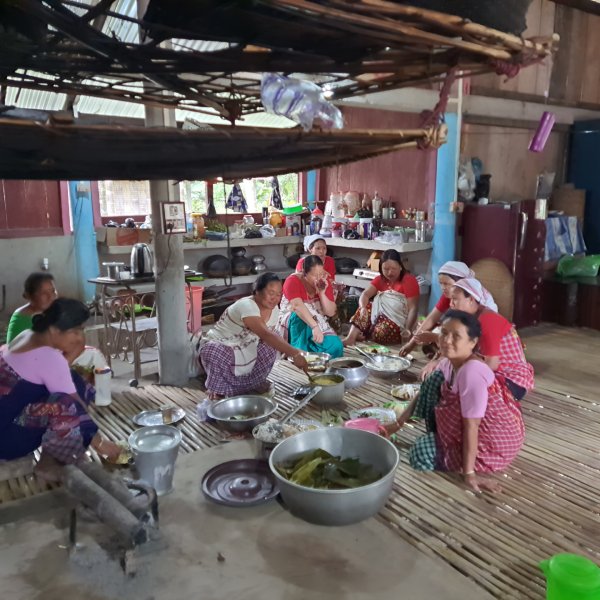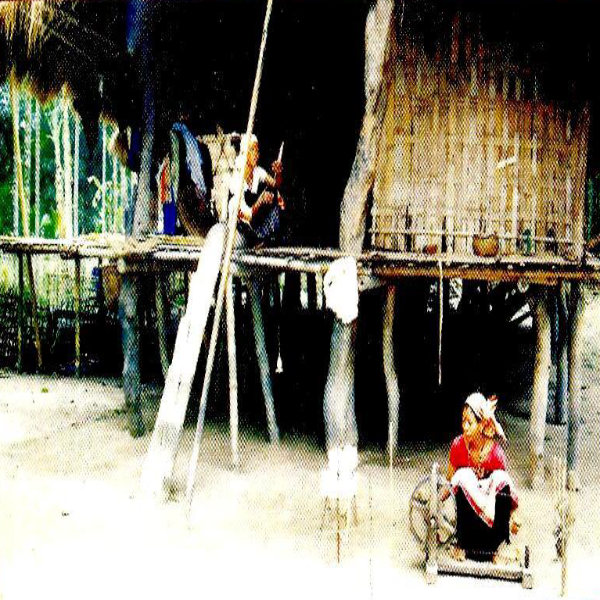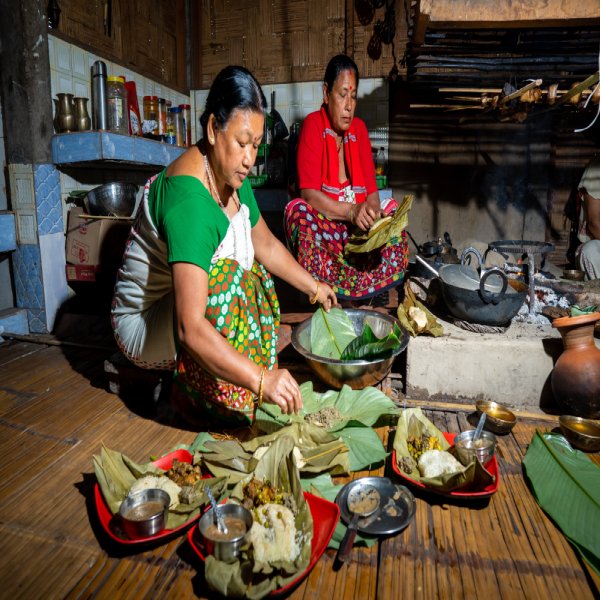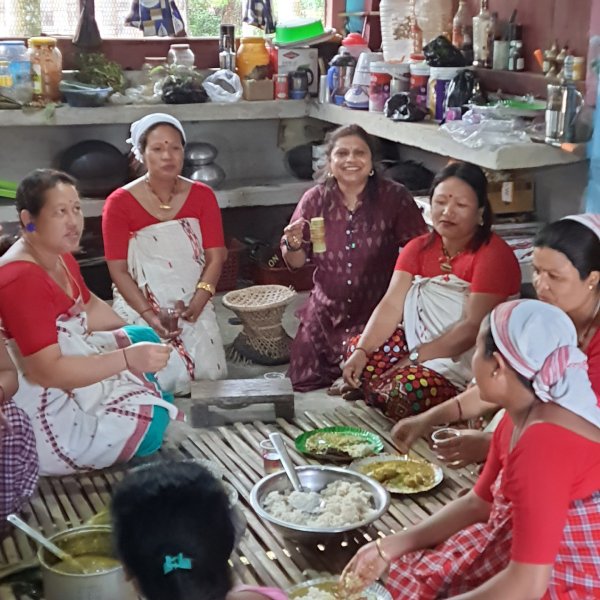
Themes
tribal architecture
Mising Stilt Houses & Daily Life, assam

As a riverine community, the Misings construct elevated stilt houses, Chang Ghar, so as to protect themselves from seasonal floods. The houses are elevated on bamboo or wooden stilts raised about 5-6 feet from the ground. This feature offers protection against water logging and ensures proper ventilation. The design remains simple yet effective, indicative of an acute consciousness of the flood-prone terrain. Notwithstanding the availability of modern materials, most Mising families continue to practice this, combining traditional knowledge with modern materials..
Houses of Mising are often built with bamboo, thatch, and cane, which they can easily find around them. Their walls are made of bamboo strips interwoven and roofs are thatched with dried grass. This kind of construction is eco-friendly and very cheap and durable, suiting most well for a wet climate. The types of houses are more communal, with open spaces designed to promote socialization. Over time, a few have used some modern construction materials, but bamboo is still a popular feature in most rural Mising villages.

The Misings traditionally follow a joint family structure, where multiple generations of one family live together under one roof. This system helps share responsibility so that while the elderly are taken care of, the younger ones look after domestic works. The decision-making power is with the eldest male, yet women have an important role in running the domestic affairs. The system enhances the family ties through which knowledge, traditions, and economic resources can be transferred. Even with growing nuclear families, the common system still forms the backbone of Mising society.

The Merum, or the hearth of a Mising family, is the center of the household. Both practical and symbolic, it is used for cooking, warming food, and the performance of rituals. Mealtimes, talks, and religious rituals take place around the Merum with families. The ancestors and gods are worshipped with offerings made at the Merum, thus imparting it its sacredness. The Merum represents unity within the family and is the setting for telling tales, acquiring wisdom, and learning traditions to pass on to subsequent generations.

Mising women are an integral part of household and economic life. They are skilled weavers, creating traditional cloth for domestic consumption as well as for sale. They supervise daily tasks, child care, and cooking in addition to engaging in agricultural activities such as planting and weeding. Women are active participants in community life, taking the lead in conducting festivals and rituals. While men exercise formal control over family affairs, women's input is vital to the smooth running of Mising society.

